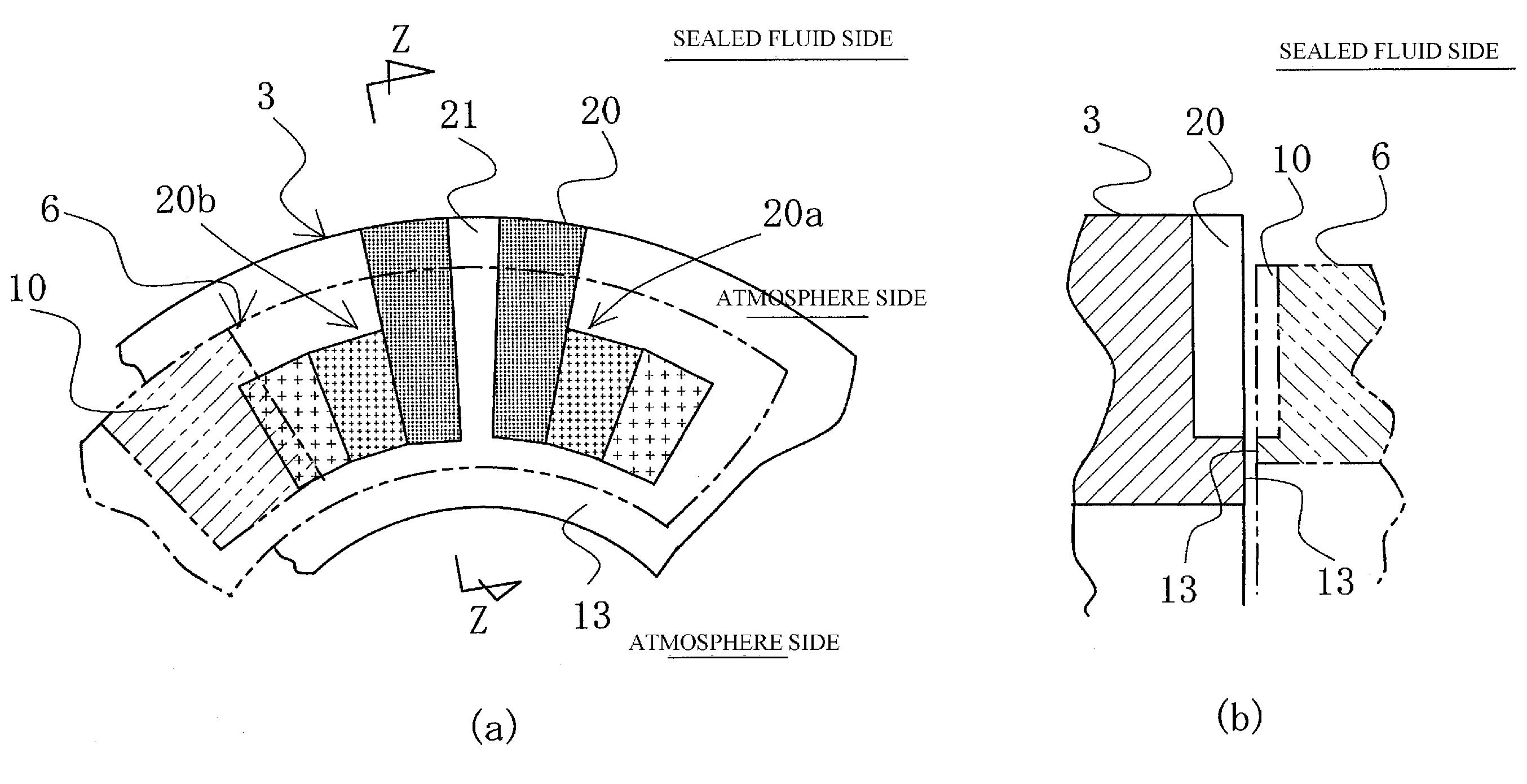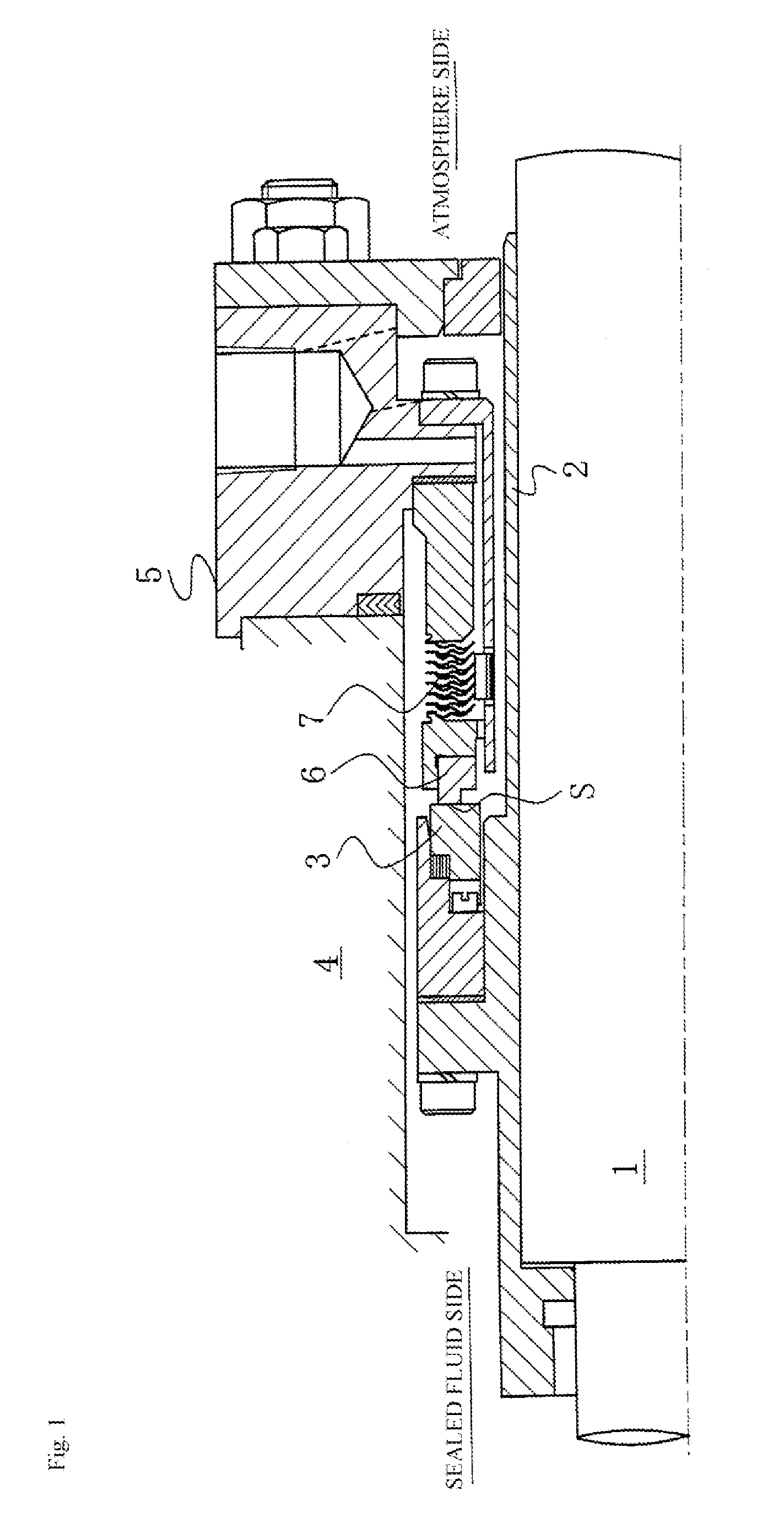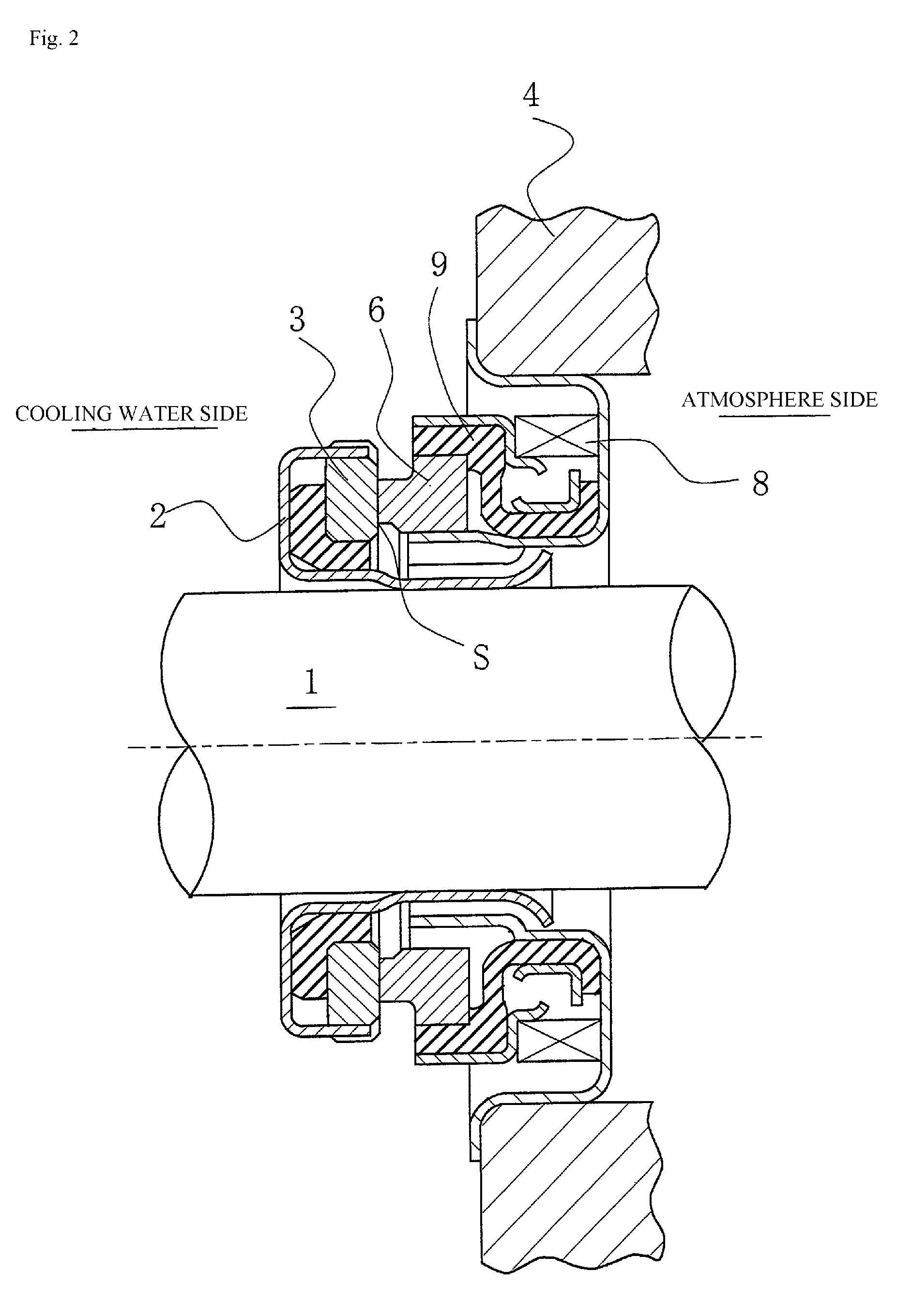Sliding parts
a sliding part and relative rotation technology, applied in the direction of engine components, mechanical equipment, engine seals, etc., can solve the problems of reduced lubrication, leakage of fluid outflow, seizing, vibration, etc., and achieve stable sliding properties, reduce sliding resistance, and ensure the effect of lubrication
- Summary
- Abstract
- Description
- Claims
- Application Information
AI Technical Summary
Benefits of technology
Problems solved by technology
Method used
Image
Examples
embodiment 1
[0055]FIG. 3 is a plan view of one embodiment of the mechanical seal shown in FIGS. 1 and 2, in which pumping areas are formed on the sealing face S of the stationary ring 6, which has the smaller width with respect to the radial direction of the sealing faces of the stationary ring 6 and the rotating ring 3.
[0056]In FIG. 3, the stationary ring 6 is referred to as a seal ring, and is often formed from carbon (a soft material). A plurality of pumping areas 10 is discontinuously formed on the sealing face S of the stationary ring 6 in the circumferential direction so as to be a part of the radial direction of the sealing face S and directly communicate with the sealed fluid-containing space via an outer circumference side 12.
[0057]In the case of an outside-type mechanical seal in which the sealed fluid side is to the inside of the rotating ring 3 and the stationary ring 6, the pumping areas 10 need only be formed as part of the sealing face S in the radial direction and directly commu...
embodiment 2
[0097]FIG. 8 is a cross-sectional view of an instance in which, contrary to the first embodiment, pumping areas 10 are formed in a sealing face of a rotating ring 3 and dynamic pressure-generating grooves 20 are formed in a sealing face of a stationary ring 6 according to a second embodiment of the present invention.
[0098]In FIG. 8, the rotating ring 3 is referred to as a mating ring, and is often formed from SiC (a hard material). A plurality of pumping areas 10 is discontinuously formed in the circumferential direction of the sealing face S of the rotating ring 3. The plurality of pumping areas 10 is formed over a part of the outer and inner parts of the radial direction of the sealing face S, and is formed so that a part of the sealed fluid in the pumping areas 10 is not covered by the corresponding sealing face S of the stationary ring 6.
[0099]The stationary ring 6 is referred to as a seal ring, and is often formed from carbon (a soft material). Dynamic pressure-generating groov...
embodiment 3
[0101]FIG. 9 is an illustration of another embodiment of pumping areas according to a third embodiment of the present invention, and is a cross-sectional view along a plane orthogonal to the sealing faces.
[0102]Whereas the pumping areas 10 are formed parallel to a plane orthogonal to the axis in the circumferential direction and the radial direction in the first embodiment, in FIG. 9, the intake pumping areas 10a are formed so that the linear indentations thereof grow progressively higher (shallower) towards the rotational direction R of the rotating ring 3 constituting the counterpart sliding member, and the outflow pumping areas 10b are formed so that the linear indentations thereof grow progressively lower (deeper) towards the rotational direction R of the rotating ring 3 constituting the counterpart sliding member.
[0103]Because the linear indentations are both inclined with respect to the rotation tangent line as seen in plan view and inclined in the circumferential direction as...
PUM
 Login to View More
Login to View More Abstract
Description
Claims
Application Information
 Login to View More
Login to View More - R&D Engineer
- R&D Manager
- IP Professional
- Industry Leading Data Capabilities
- Powerful AI technology
- Patent DNA Extraction
Browse by: Latest US Patents, China's latest patents, Technical Efficacy Thesaurus, Application Domain, Technology Topic, Popular Technical Reports.
© 2024 PatSnap. All rights reserved.Legal|Privacy policy|Modern Slavery Act Transparency Statement|Sitemap|About US| Contact US: help@patsnap.com










